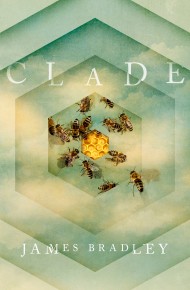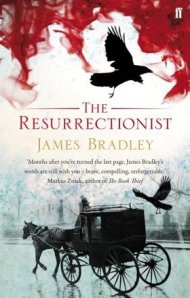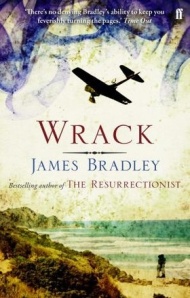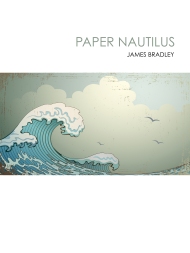The Hugo Award for Best Novel 2010
 In a world dominated by literary prizes awarded by what Tony Abbott would call “faceless men”, there’s something refreshingly democratic about Science Fiction’s highest honour, the Hugo Awards, which are decided not by a committee of judges but by a ballot of the members of the World Science Fiction Society.
In a world dominated by literary prizes awarded by what Tony Abbott would call “faceless men”, there’s something refreshingly democratic about Science Fiction’s highest honour, the Hugo Awards, which are decided not by a committee of judges but by a ballot of the members of the World Science Fiction Society.
Whether the voters always get it right is an open question. Only last year one of the rising stars of SF, British author Adam Roberts, launched a scathing attack on the 2009 shortlists, decrying their deadening mediocrity, and arguing it was vital the SF community resisted the tendency to celebrate the safe, the familiar and the reassuring.
Yet for many casual (and indeed not so casual) SF readers the Hugos continue to serve an important role as a shorthand guide to some of the best that the large and often confusing world of SF has to offer.
This year’s shortlist for Best Novel , the winner of which will be announced at a gala event at AussieCon next weekend has been generally better received than the 2009 shortlist. And there is little doubt that despite some notable omissions (Paul McAuley’s hauntingly beautiful portrait of humanity’s children spread across the moons of Saturn and Jupiter, The Quiet War, for instance, or Adam Roberts’ sly Soviet UFO novel, Yellow Blue Tibia) the list is a more substantial and certainly more representative selection than last year’s.
That’s not to say the books nominated are uniformly good. Certainly the inclusion of Robert J. Sawyer’s techno-thriller, WWW: Wake and Cherie Priest’s steampunk zombie novel, Boneshaker does not fill one with confidence about the judgement of the voters who nominated them.
With Boneshaker it is at least possible to see why it might have found an audience. A sprawling conflation of almost every trope to find success in recent years culture (Vernian machinery? Check. Airships? Check. Zombies? Check) it presents itself as an exercise in pure entertainment, a rollicking mixture of Boy’s Own Adventure and Saturday morning serial.
The problem is that it feels as tired and as contrived as it sounds. Steampunk has long since degenerated into little more than ahistorical wish fulfilment, but Boneshaker might be the most cogent argument yet that as a genre it has transcended decadence and descended into self-parody.
If energetic voting from steampunk fans just might explain the inclusion of Boneshaker, the inclusion of Sawyer’s WWW: Wake is essentially inexplicable. The first in a projected trilogy, it focuses on a girl, blind from birth, who acquires the capacity to “see” the world wide web after an operation to restore her sight, and in so doing stumbles upon the first stirrings of an emergent intelligence moving through the world’s networks.
If the plot of WWW: Wake sounds like a bad Hollywood movie, that’s probably not accidental: Sawyer’s earlier books include FlashForward, the novel that inspired the television series of the same name. But in a way the dopiness of the conceit and the flatness of the characters is less of a problem than the novel’s failure to synthesise the gobbets of research it incorporates into its fabric, either thematically or textually.
The next two books on the shortlist, Catherynne M. Valente’s Palimpsest and Robert Charles Wilson’s Julian Comstock are quite different kettles of fish. Palimpsest, Valente’s fourth novel, is a distillation of the qualities that make her earlier work so striking: the swelling, overripe prose, the overt eroticism, the digressive, dreamlike narrative structures. And, like those earlier books, it is likely to divide readers, with some finding her the lush, over-aestheticised surfaces of her writing bewitching and sensual, while others recoil, glutted.
By contrast, Robert Charles Wilson’s Julian Comstock marks a striking departure for this former Hugo winner, abandoning the pure SF of earlier work for a steampunk-flavoured retro-futurism. Part picaresque, part parable, it is set in the remnants of an America transformed into a horse-drawn theocracy by the end of oil, plague and civil war, and draws on Roman history (and Gore Vidal’s eponymous account of the life of the Emperor Julian) to ask questions about the creation and control of history.
I’m an admirer of Wilson, and in particular his Hugo Award-winning 2005 novel, Spin, but Julian Comstock seems to me to be a curious misfire of a novel, possessing neither the narrative energy nor the thematic complexity necessary to sustain it.
Perhaps tellingly, the more deliberately science fictional of the two real standout books on the shortlist, Paolo Bacigalupi’s The Windup Girl, is grounded in many of the same anxieties about the end of empire and the environmental sustainability of contemporary culture as Julian Comstock.
Set in the Thailand of the late 21st century, it depicts a world where runaway climate change has reshaped the global order. Isolated by restrictions on energy use the countries of the world have retreated into isolationism, guarding their genetic wealth from the predations of American and European bioengineers.
Bacigalupi’s vision is intense and often overwhelming, casting the reader into a world reminiscent, in many ways, of William Gibson’s Neuromancer’s Sprawl And while the complexity of the plot makes the novel less engaging in places than it might be, its real strength lies in its portrayal of Emiko, the windup girl of the title, an artificially created sex slave, and her battle to overcome the impulses built into her nature by her creators.
If The Windup Girl is a reminder of just how thrilling pure SF can be, the other real standout on the shortlist, China Mieville’s The City and The City, is testimony to the manner in which the distinction between what was once regarded as SF and mainstream literary fiction has grown increasingly blurry in recent years.
Along with Neil Gaiman, Mieville is, of course, the SF writer who has had the greatest success developing an audience beyond a traditional SF readership in recent years. This is partly testament to the sheer fecundity of his imagination. But it is also testament to the manner in which his novels subvert the usual expectations of their genre, grafting elements of SF, and critiques of the contemporary police state and globalization onto fantasy in Perdido Street Station and Iron Council, or reimagining fairy tales in a contemporary urban setting in King Rat.
The City and The City is no exception. An initially disorienting, ultimately fascinating mash-up of Le Carre and Kafka, it takes the notion of the divided city and pushes it to its ultimate conclusion, imagining a pair of Balkan city-states, each with its own language, customs, architecture and history, divided not by a wall, but by their inhabitants’ capacity to “unsee” the buildings, cars and even people of the other city as they pass them.
There is little doubt The City and The City, which takes its author’s fascination with the interface between the urban environment and culture to its logical conclusion is Mieville’s most accomplished novel to date. But it is also a novel that leaves behind many of the trappings we commonly associate with SF. For despite elements of the fantastic such as the suggestion that the division of the city may be the result of reality-altering technologies developed by earlier inhabitants, the novel’s real antecedents are Borges and, perhaps more pertinently, the sort of uneasy political parable perfected by writers such as the Albanian Ismail Kadare. Yet in so doing it also, perhaps ironically, provides an eloquent reminder of precisely why SF remains so important. For by taking the reality we are familiar with and remaking it The City and The City forces us to see our own world anew, unsettling assumptions and provoking new ways of thinking.
Originally published in The Sydney Morning Herald and The Age, 28 August 2010.









Trackbacks & Pingbacks